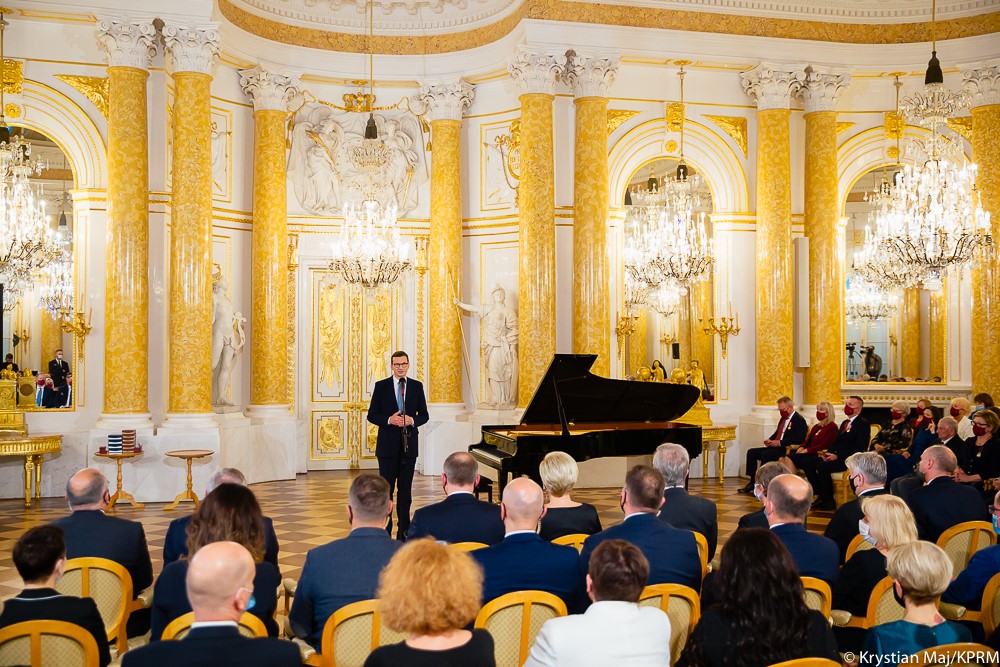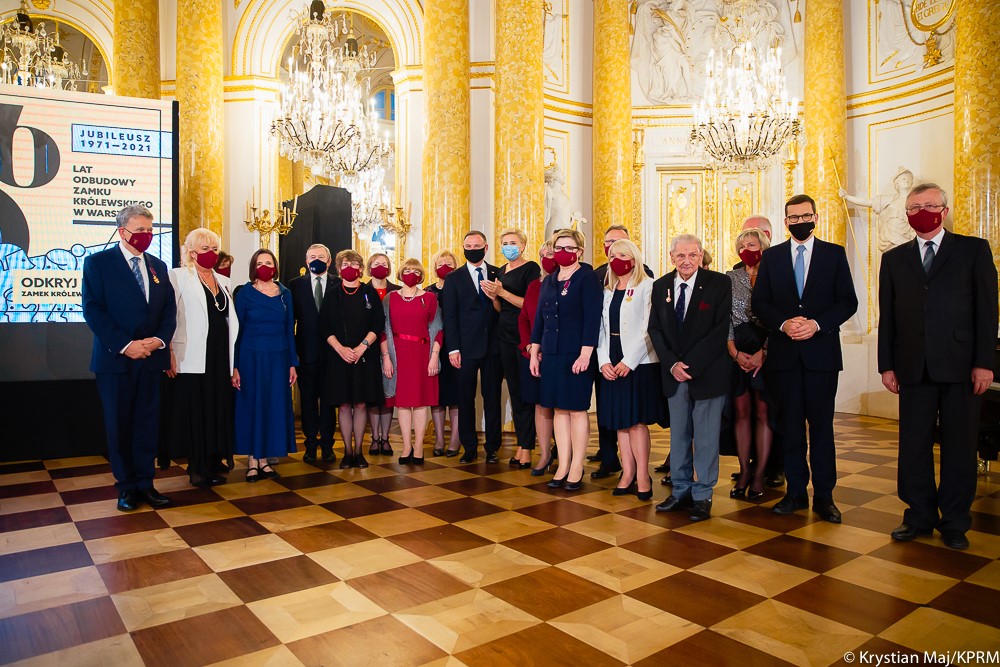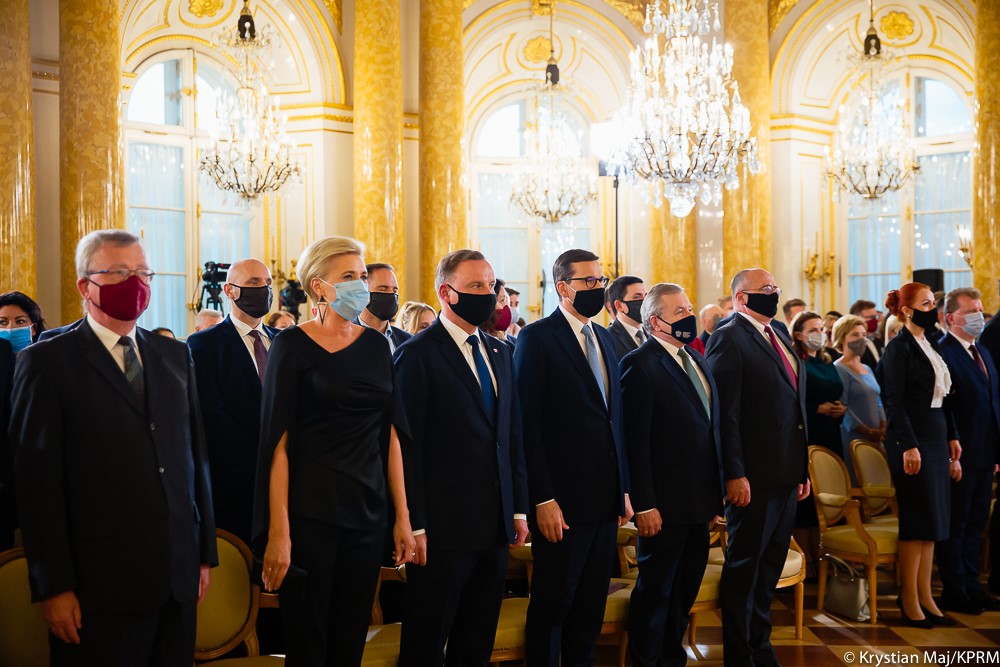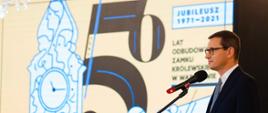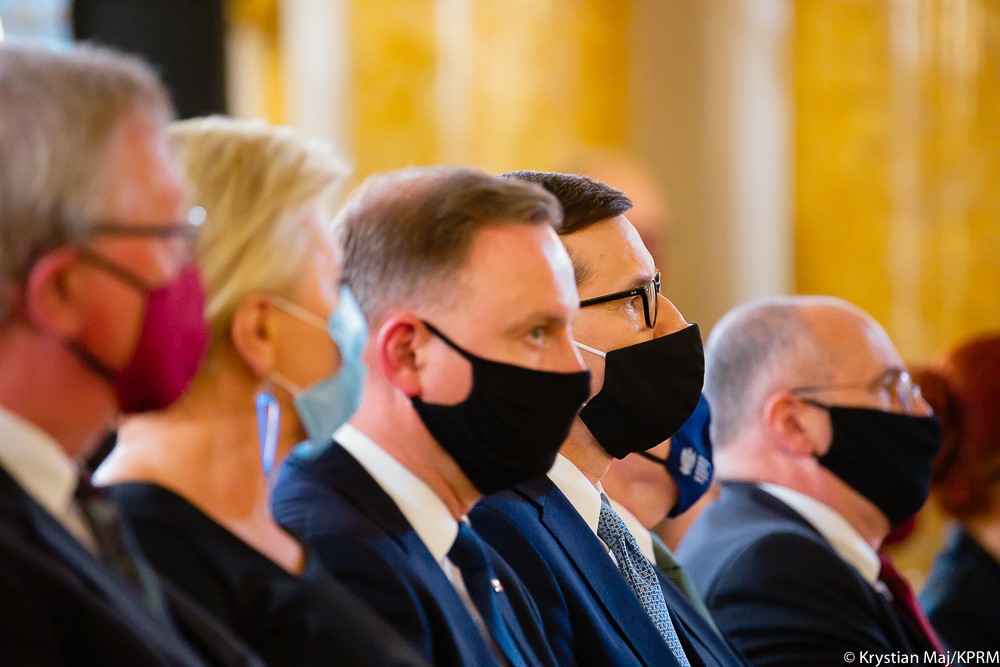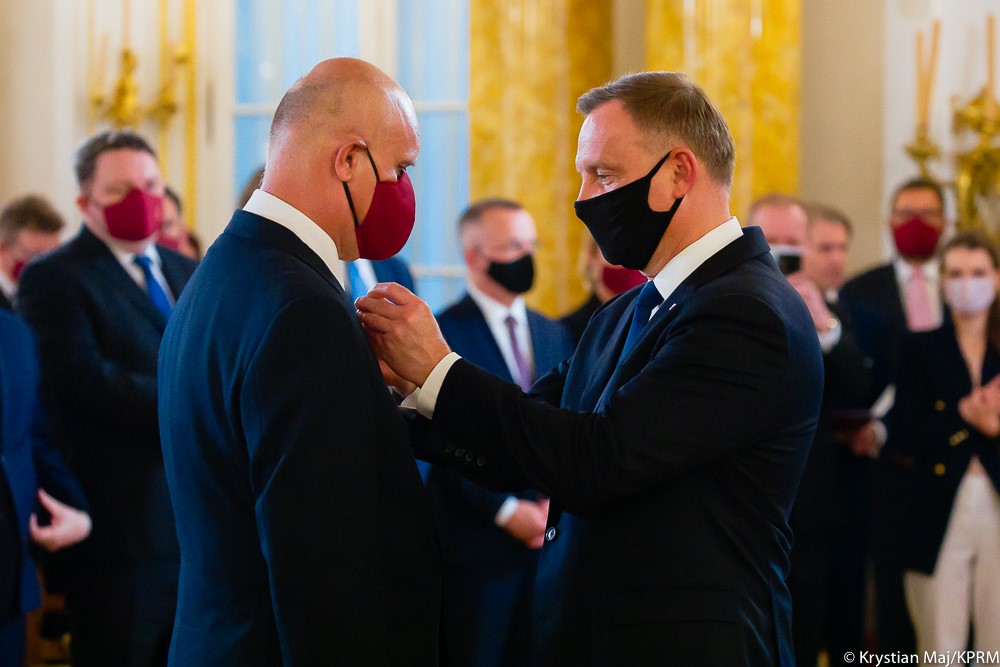Prime Minister: the Royal Castle is a special place for Poland and every Pole
16.09.2021
The year 2021 marks the beginning of celebrations concerning the 50th anniversary of rebuilding the Royal Castle in Warsaw. The celebrations will end in 2024. During the anniversary ceremony held last Thursday, Prime Minister Mateusz Morawiecki stressed the symbolism of the Royal Castle in the history of Poland. The seat of the kings was the place where the first European constitution was adopted. It is also where representatives of the Polish authorities resided until the outbreak of World War II.
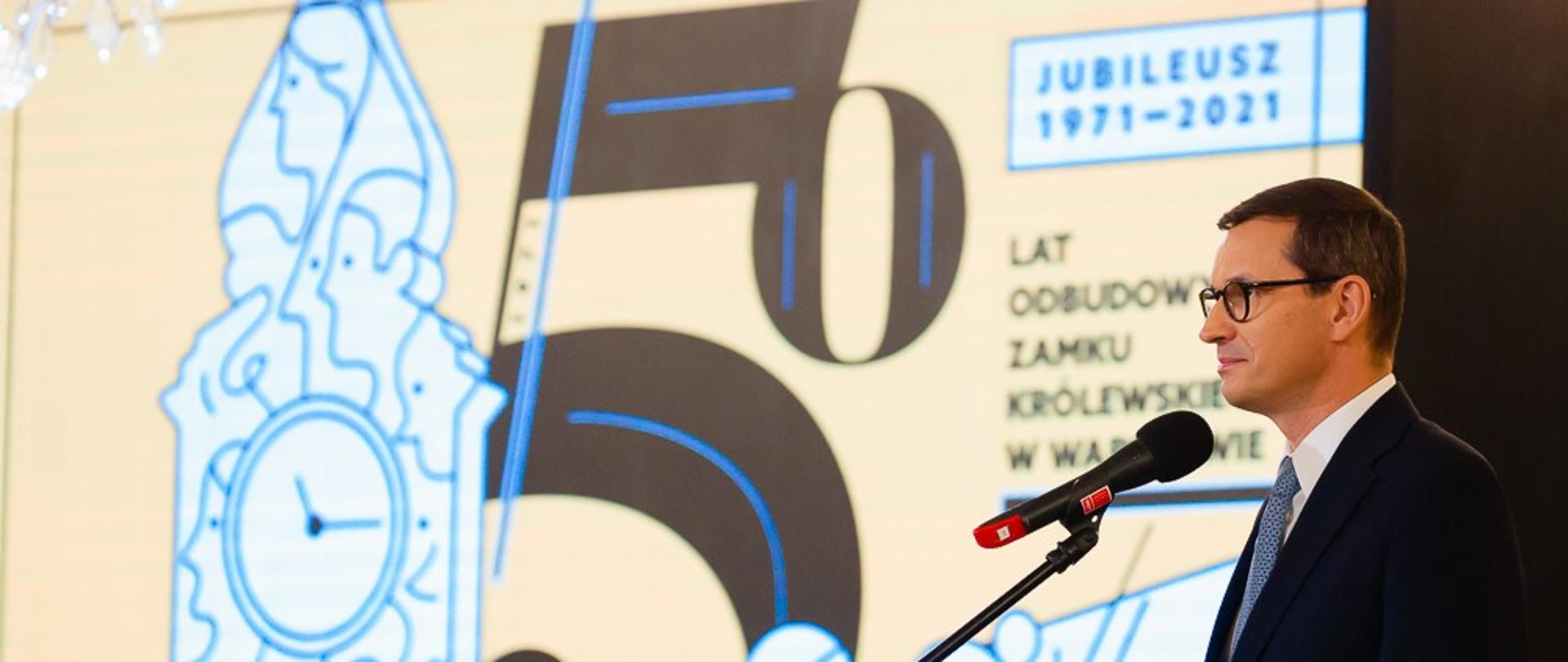
”The Royal Castle is associated with many tragic events but also with many ambitions. The Castle is Poland in a nutshell. It is the Republican spirit in the royal setting,” said Prime Minister Mateusz Morawiecki, adding that ”Can we now say that Warsaw, the capital city of Poland, has finally healed its World War II wounds? As a matter of fact, the answer is no. We are waiting for the reconstruction of the Saxon Palace, Brühl Palace, and certain tenement houses. I believe that the Saxon Palace reconstruction will be a historic link to combine pre-war Poland with free and independent Poland. Once the reconstruction of Warsaw is fully completed, Poland will be great. The Royal Castle is the symbol of that and brings hope to all of us”.
Historic seat of the Polish authorities
The Royal Castle in Warsaw is a baroque and classical building, which is now home to a museum and serves a representative role. It is visited by members of royal families, representatives of countries, diplomats, and tourists from across the globe.
At first, the Castle was the residence of Mazovian dukes. Later on, it was the seat of those in charge of the Polish–Lithuanian Commonwealth, with the king and Sejm residing in it. The Constitution of 3 May 1791 was adopted there.
The Royal Castle has been plundered and destroyed numerous times. Following the failure of the November Uprising, it was the seat of the Russian administration and, during the First World War, the seat of the German Governor-General.
At the beginning of the Interwar period, the seat of former kings was used by the Chief of State. Later on, until 1939, it was the seat of the President of Poland.
At the very beginning of World War II, the Royal Castle was plundered and burnt by the Germans. On 17 September 1939 to be exact, the clock on the Sigismund’s Tower, which was part of the Royal Castle, stopped ticking as a result of a great fire.
”While watching a video of the walls of the Royal Castle on fire, we were aware that the goal of the Germans was to destroy Poland and Polish identity – just as they reduced the Castle and Warsaw to ashes. Following the 1944 destruction of the Royal Castle, the only thing that survived was a small part of one wall with Stefan Żeromski’s window in it,” pointed out Mateusz Morawiecki, the President of the Council of Ministers.
Civic reconstruction of the Royal Castle
In the middle of the 1960s, the part of the Castle that survived and the Royal Castle Library building were entered into the register of monuments. From 1971 onwards, the Civic Committee for the Reconstruction of the Royal Castle in Warsaw was in charge of the entire reconstruction process.
The museum was set up only in 1979, and a national cultural institution named ”Royal Castle in Warsaw – Monument of National History and Culture” was established then. It was only in 2014 that the building began to operate under the name of ”Royal Castle in Warsaw – Museum. Residence of Kings and the Republic of Poland”. In 1980, the Royal Castle and the Warsaw Old Town were inscribed on the UNESCO World Heritage List.
”After 27 years, the barbaric destruction turned out to be a germ of future reconstruction. I think that what the Communists did in 1971 was underestimated. They stimulated national imagination to focus on the Royal Castle reconstruction and caused Polish families to pool their money to fund the reconstruction. As a result, the new reality came to us. The Castle became the symbol of continuity and the future,” said Mateusz Morawiecki, the head of government.
Royal Castle as the place of adoption of the first European constitution
The young generation of Poles and many foreign guests are unaware of the destruction of the Royal Castle in Warsaw. The goal behind the celebrations is to bring back the emotions of the past and to reveal the scale of social involvement and dedication of the citizens.
The anniversary celebrations will involve many cultural and scientific events. Objectives related to the functioning of the Royal Castle are also pursued. The collection of works of art continues to be expanded.
The new design of the Throne Room is expected to be revealed in 2024. In January 50 years ago, the first meeting of the Civic Committee for the Reconstruction of the Royal Castle in Warsaw took place, marking the beginning of the restoration of the seat of kings in the capital city.
”It is the place and seat of Polish kings. It is the place of adoption of the Constitution of 3 May 1791, and it is the place that witnessed the dethronement of Tzar Nicholas I of Russia from the position of King of Poland. It is also the place where events that were crucial to us took place,” said Prime Minister Mateusz Morawiecki.

